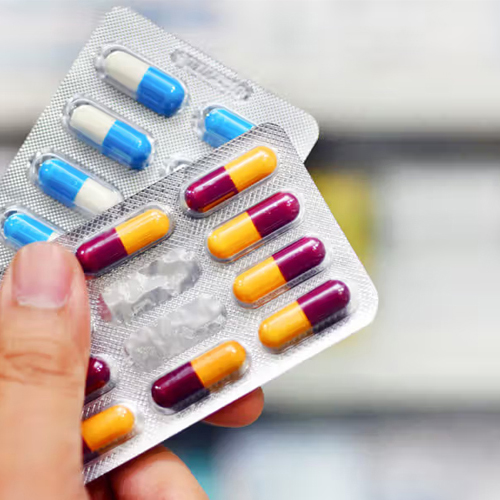The United States is facing a persistent drug shortage crisis, with over 300 essential medications in limited supply, affecting hospitals, pharmacies, and patient care nationwide. From life-saving chemotherapy drugs to common antibiotics and pain relievers, these shortages are disrupting treatment plans, delaying surgeries, and forcing healthcare providers to seek alternative solutions. The ongoing scarcity is driven by a combination of manufacturing issues, supply chain disruptions, and increased demand, leaving patients and medical professionals in a challenging position.
Causes of the Drug Shortages
Several key factors contribute to the ongoing drug shortages:
Manufacturing and Quality Control Issues
- Many drugs, especially generic medications, are produced by a small number of manufacturers. If one facility experiences a problem—such as contamination, equipment failure, or regulatory violations—it can significantly disrupt the supply chain.
- The FDA has had to halt production at certain plants due to quality concerns, further exacerbating the shortages.
Global Supply Chain Disruptions
- Many raw materials and active pharmaceutical ingredients (APIs) are sourced from overseas, particularly from China and India. Delays in shipping, trade restrictions, and geopolitical tensions have slowed down production.
- The COVID-19 pandemic exposed vulnerabilities in the supply chain, and while the crisis has eased, supply chain recovery has been slow.
Increased Demand for Certain Medications
- Seasonal spikes in respiratory illnesses, flu, and RSV have led to high demand for antibiotics, antivirals, and fever-reducing medications.
- New uses for existing drugs—such as the rise in GLP-1 medications for weight loss—have led to unexpected surges in demand.
Low Profit Margins for Generic Drugs
- Many essential drugs, particularly generics, have thin profit margins. Some manufacturers have stopped producing these medications altogether, leading to limited supply.
- With fewer companies producing these drugs, a single factory shutdown can cause nationwide shortages.
Medications Most Affected by Shortages
The current shortage impacts a wide range of drugs, including:
- Cancer Treatments: Chemotherapy drugs like cisplatin and carboplatin, essential for treating various cancers, are in critically low supply.
- Antibiotics: Amoxicillin, a commonly prescribed antibiotic for infections, has been difficult to find in many pharmacies.
- ADHD Medications: Stimulants like Adderall and Ritalin, used to treat attention deficit hyperactivity disorder (ADHD), remain in short supply, affecting thousands of patients.
- Pain Medications: Injectable opioids like morphine and fentanyl, commonly used in hospitals, have been difficult to obtain.
- IV Fluids and Electrolytes: Essential hospital supplies such as saline bags and electrolyte solutions have been impacted, complicating patient care.

Impact on Patients and Healthcare Providers
The widespread drug shortages have serious consequences for both patients and healthcare professionals:
- Delayed or Altered Treatments: Cancer patients are facing delays in receiving chemotherapy, which can affect treatment outcomes. Some hospitals are forced to ration supplies or switch to less effective alternatives.
- Increased Costs: Limited supply drives up prices, making essential medications unaffordable for many patients, especially those without insurance.
- Higher Risk of Medication Errors: When substitutes are used, dosing adjustments are required, increasing the likelihood of mistakes.
- Strain on Pharmacies and Hospitals: Pharmacists and healthcare providers must spend additional time sourcing alternative treatments, placing a burden on an already overstretched system.
Government and Industry Responses
Recognizing the severity of the crisis, the FDA and other agencies have taken steps to address the issue:
FDA’s Efforts:
- The FDA is working with manufacturers to expedite approvals for alternative drug sources and new suppliers.
- Temporary importation of medications from other countries is being considered to fill critical gaps.
Legislative Proposals:
- Some lawmakers are advocating for policies to incentivize domestic drug production to reduce reliance on foreign suppliers.
- Proposed legislation aims to increase transparency in the drug supply chain to prevent future shortages.
Pharmaceutical Industry Measures:
- Drug manufacturers are increasing production capacity where possible, but many argue that long-term solutions require financial incentives to make producing low-cost generics more viable.
Looking Ahead: Possible Solutions
While short-term fixes are being implemented, long-term solutions are needed to prevent future shortages:
- Diversifying the Supply Chain: Reducing reliance on a few manufacturers and increasing domestic production can help stabilize supply.
- Stockpiling Critical Medications: Creating a national stockpile of essential drugs, similar to emergency medical reserves, could prevent severe shortages.
- Encouraging Investment in Generic Drugs: Government incentives for generic drug manufacturers could make production more sustainable.
- Improved Transparency and Reporting: Requiring drug companies to provide early warnings about potential shortages can help mitigate disruptions.
Conclusion
The ongoing drug shortage crisis in the U.S. is a complex issue with no easy solution. While efforts are being made to stabilize the supply chain, patients and healthcare providers continue to struggle with the impact of these shortages. Addressing the root causes—such as supply chain vulnerabilities, manufacturing challenges, and economic disincentives for generic drug production—will be essential for ensuring long-term stability in the pharmaceutical market. Until then, patients and healthcare workers must navigate these challenges with careful planning and advocacy for systemic change.
Our Products
-
Tadaga Super 60mg
$2.00 / Per Pill
-
Lovegra 100mg
$1.50 / Per Pill
-
Testosterone Enanthate
$240.00 / Per 10ml





